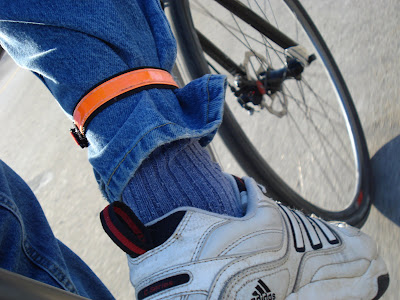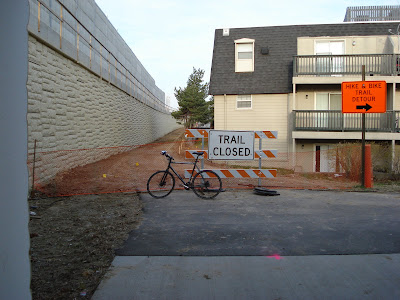Recent changes to my routes have meant more hilly terrain during my rides. During this time I’ve used gear combinations which I have never used before. I should say that I never dared use before.
For some reason, over the last few decades I’ve come to think of using higher gears as the manly choice. Heaven forbid someone catch me slipping down to “granny gears.” Somehow, in my mind, I settled upon the idea that higher gears meant a better workout and lower gears were the wimpy way out. College Boulevard, just west of State Line, changed all of that.
 View Larger Map
View Larger MapI’ve mentioned the hill a couple times in the last few weeks – 0.3 miles uphill with a 29% grade at one point. My first trip up that hill found me set in my ways and struggling to muscle out the climb. It wasn’t fun. During my second trip I down shifted and remember my inner monologue going something like “well, that’s why they made those gears…” I made it to the top of the hill quicker and with, seemingly, less effort. Sure, I was pedaling like a mad man, but my speedometer showed an increase of 1.5 MPH over the previous day’s hammer-fest.
Seeking to justify this change in attitude, I harnessed the power of the internet and searched for “Bicycle RPM Gears Fat Strength” and came up with some very interesting information. According to this wonderful article at Active.com, “
Why fast pedaling makes cyclists more efficient,” higher pedaling speeds are more economical and burn more fat. High pedaling rates also preserve glycogen in fast-twitch muscle fibers, meaning more energy available during the closing moments of a race.
In one case the cyclists pedaled their bikes at 50 revolutions per minute (rpm) while using a high gear. In the second case, the athletes pedaled in a low gear at 100 rpm. The athletes were traveling at identical speeds in the two instances, so their leg-muscle contractions were quite forceful at 50 rpm and moderate -- but more frequent -- at 100 rpm.
As it turned out, the athletes' oxygen consumption rates were nearly identical in the two cases, and heart and breathing rates, total rate of power production, and blood lactate levels were also similar.
However, athletes broke down the carbohydrate in their muscles at a greater rate when the 50 rpm strategy was used, while the 100 rpm cadence produced a greater reliance on fat.
And then there’s Lance. The
Wikipedia entry on Lance Armstrong mentions his riding style.
Armstrong has a low lactate threshold and can maintain a higher cadence (often 120 rpm) in a lower gear than his competitors, most noticeably in the time trials. This style is in direct contrast to previous champions (such as Jan Ullrich and Greg LeMond) who used a high gear and great strength to win time trials. It is believed that a high cadence results in less fatigue in the leg muscles than a lower cadence requiring more severe leg muscle contractions. Ultimately the cardiovascular system is worked to a greater extent with a high cadence than with a lower, more muscular cadence. Because the leg muscles are taxed less with a high cadence pedaling style, they recover faster, and the efforts can be sustained for longer periods of time. Armstrong dedicated a significant portion of his training to developing and maintaining a high cadence style.
So there it is, I’m going to embrace hill climbing and do my best to maintain my typical average MPH while using a lower gear for a few weeks to see if I notice a difference.







